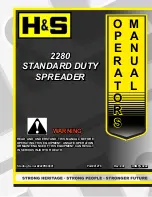
Handheld Reader Kit Quick Start Guide
for Models WMR-3121, WMR-3122, WMR-3161, WMR-3162
1. Check that all parts are included:
☐
Handheld Reader
☐
Handheld Holster
☐
Base Unit
☐
Charger and Charging Dock
☐
6 connectors (2 each of 2-pin and 8-pin;1 each of 10-pin and 12-pin)
☐
Warranty
2. Bench test.
(Complete before field installation for easier troubleshooting).
Basics:
• Handheld Reader and Base Unit should be at least 24 inches apart.
• The units as shipped are configured as a matched set and are ready to power up and operate.
• Be sure Handheld Reader is fully charged by connecting the Charger Cable and Charging Dock, plugging
the charger into an outlet and placing the Handheld Reader in the Charging Dock (approximately 4 hours for
a full charge).
• In general, the Base Unit is installed similar to installing a fixed reader connected to access control panel.
• Base Unit contains 2 boards: Board A and Board B.
• The Handheld Reader has 5 LEDs:
• Top LEDs, from left: Red (Power/Card Acknowledge); Blue (Communication Status); and Green (Card
Verification).
• There are also 2 red LEDs just above the In/Out gate selection buttons to indicate the selected gate/lane.
Bench Testing Procedure:
1. Run the following wires between the Base Unit’s Board A to a Wiegand port on the access control panel:
Data 0, Data 1, common ground, LED input.
2. Run the following wires between the Base Unit’s Board B to another Wiegand port on the access control
panel: Data 0, Data 1, common ground, LED input.
3. Connect a suitable power supply to the Base Unit (8 - 16 Volts dc; minimum of 300mA).
4. Press the Power button on the Handheld Reader. Press the “In” gate selection button to ensure Reader is
communicating with Board A on the Base Unit.The Reader's Red LED will illuminate when powered on, and
its Blue LED will blink continuously when the Reader is communicating with the
Base Unit. The LED on Board A (in Base Unit) will also flash green.
5. To test the Handheld Reader’s gate selection feature, press the Reader’s “In” button. The red “In”
LED will light and the Blue LED will continue to blink. Repeat sequence with the “Out” button.
6. To simulate a valid badge read, make sure Handheld Reader is set to “In” mode, temporarily connect a wire
to the “LED In” and to a ground pin on the Base Unit’s Board A. While it is connected, the Handheld
Reader’s Green LED will be lit and ithe vibrate motor will be active. Disconnect the wire and repeat the
sequence with the Handheld Reader set to “Out”, with a wire temporarily connecting the “LED In” to a
ground pin on the Base Unit’s Board B.
7. To test the Handheld Reader’s relay control (Vend button), press the “In” button, then press the Relay
Control (vend) button. The Reader will briefly vibrate and the Base Unit’s Board A will emit an audible click.
Relay activity can also be tested with a voltage meter set to continuity mode. Repeat sequence, except
press the “Out” button; in this case, Board B will emit the audible click.
8. Test with a valid badge by presenting the badge to the Handheld Reader. If all connections to the panel
are made correctly, the Handheld Reader’s Green LED will illuminate and the Reader will vibrate.
9. Once the Bench Test steps are completed, the Base Unit is ready to be installed at its permanent location,
and the Handheld Reader is ready to be used.




















